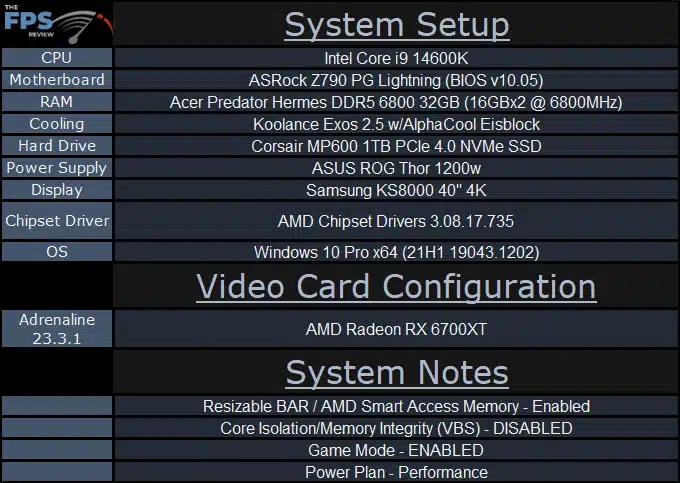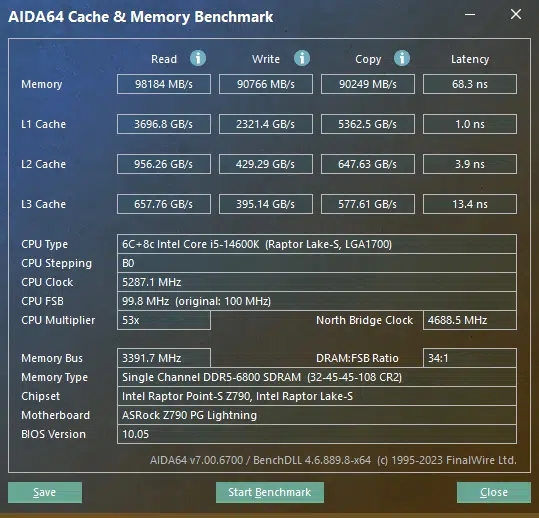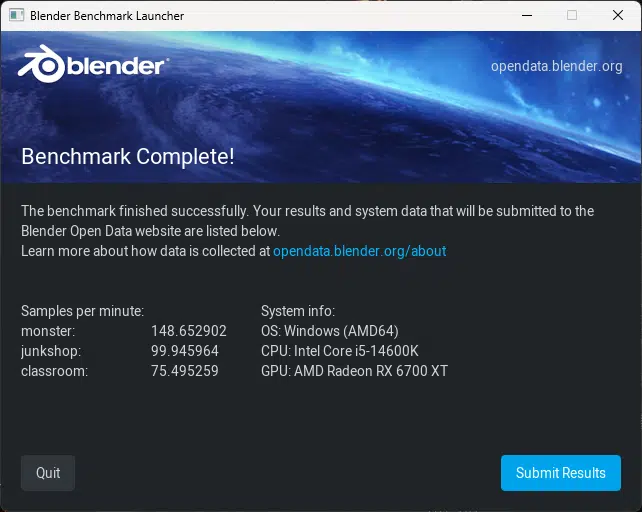
Introduction
Today, we are taking a look at what I can only describe as the most budget-oriented Z790 chipset-based board we have seen lately. At first glance, I thought it would be virtually impossible to go more value-oriented, but I was wrong as ASRock has another model that’s about $10 less actually. Regardless, ASRock’s Z790 PG Lightning is an interesting board as it eschews any fluff at all to deliver the Z790 Express chipset for a price comfortably around the $200 mark at the time of this writing.
You will not find RGB and fancy VRM heatsinks knobs, buttons, or a POST code LED display. It’s fair to say that the ASRock Z790 PG Lightning is a budget board in every sense of the word. It may have the fancy Z790 Express chipset and support DDR5 but it’s built like an entry-level B760 motherboard, which isn’t a bad thing to save cost and still obtain the Z790 chipset.
If the ASRock Z790 PG Lightning were priced at $250 or even $300, we’d have a problem but to put it in its proper context it’s priced at about $200 online as of this writing. (Check our pricing widget below for the latest pricing) There are a few less expensive motherboards out there with this chipset, but not by much. At this price concessions to achieve the price point are required. There is nothing wrong with that, provided you know what you are getting into and assuming the product works as advertised.
ASRock Z790 PG LIGHTNING
The ASRock Z790 PG Lightning is an LGA 1700 socket motherboard based on Intel’s Z790 Express chipset. As the name implies, the ASRock Z790 PG Lightning is part of the Phantom Gaming lineup. Frankly, the chipset is where most of the budget went as the chipset is basically what you get in terms of features. It’s kind of the equivalent of buying a car with a tubular frame, an engine, and little else. This thing is stripped. Ordinarily, at this price point, you’d see a lesser chipset like the B760 and a bit more in terms of board-level features.
Packaging and Contents


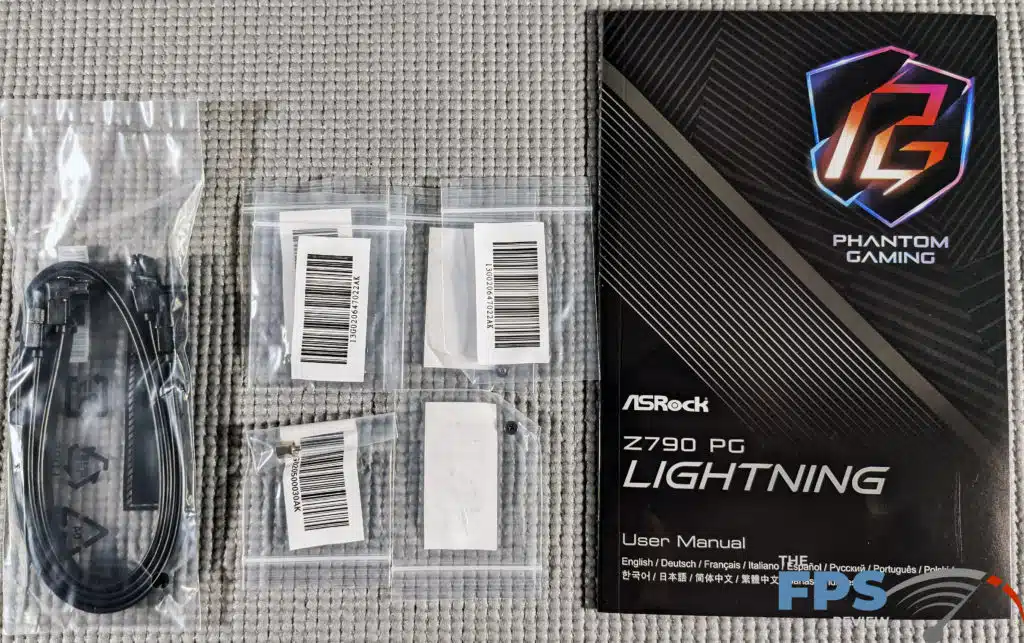
You get SATA cables, a few M.2 screws (enough for all the M.2 slots) and a manual. The board itself is strapped to a foam insert with zip ties to protect it during shipment. This is typical of ASRock. What’s not typical is that the accessories aren’t just thrown into the box and jammed closed. They actually put them underneath the cardboard and not piled on top of the board.
ASRock Z790 PG LIGHTNING PCB & Features
This should be a much shorter section than usual, but then again I can be long-winded. Given how basic the ASRock Z790 PG Lightning is the layout is excellent. It’s hard to mess up the layout when you don’t cram much onto the board. You do get 7 fan headers, 3x addressable RGB LED headers, 1x standard RGB header, and the other usual headers such as the front panel audio connector, TPM header, and Thunderbolt AIC header. You get one USB 2.0 header, two USB 3.2 Gen 1 headers, and one USB 3.2 Gen 1 Type-C header.
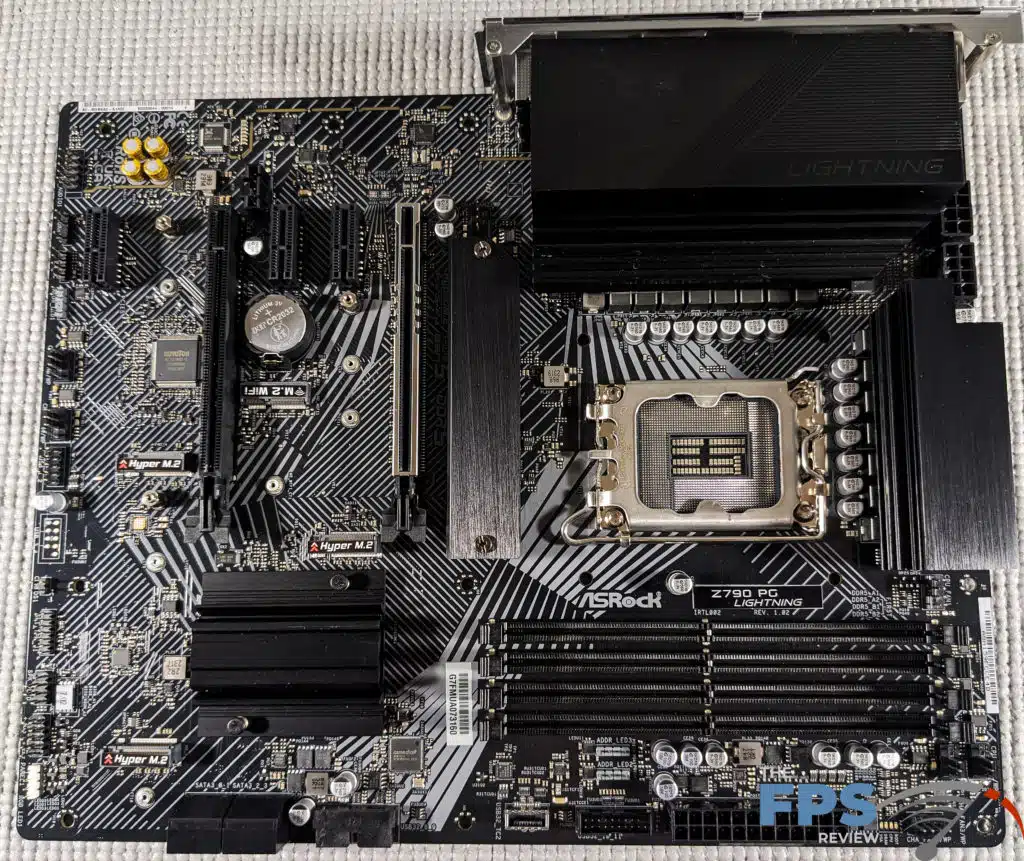
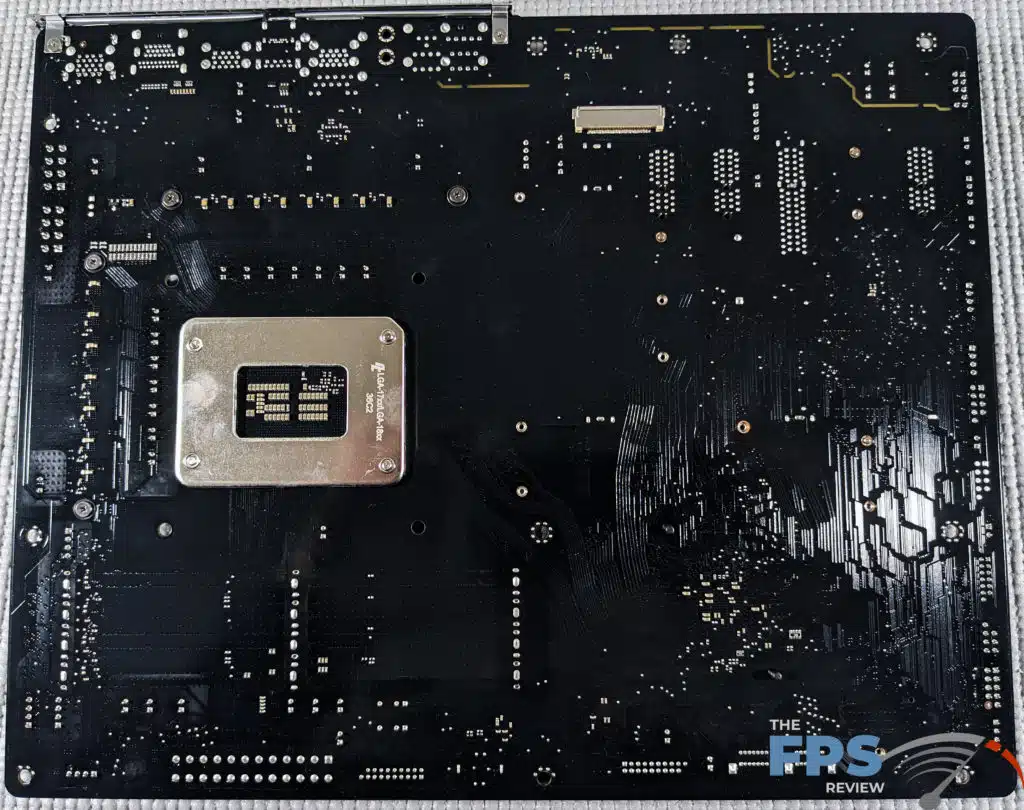
ASRock doesn’t go out of its way to list many of the more technical specifications for this. However, it appears to have a six-layer PCB. There are similar models from ASRock that mention a 2oz copper PCB, though the Z790 PG Lightning shows no such specification so I wouldn’t bet on it. When it comes to power delivery, you get 2x 8-pin CPU power connectors which is to be expected.
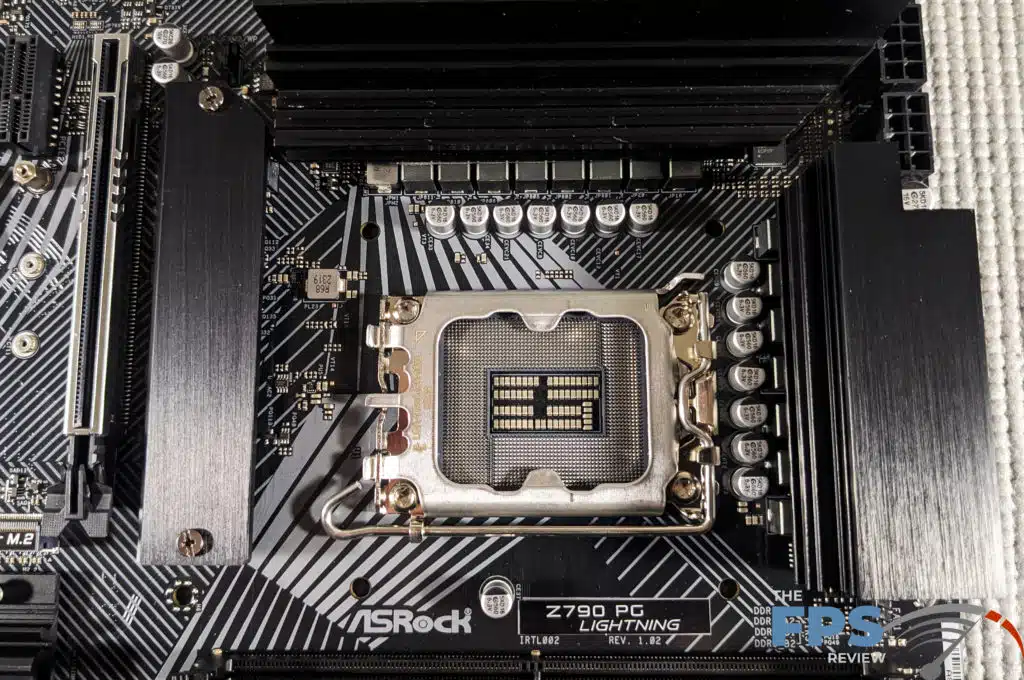
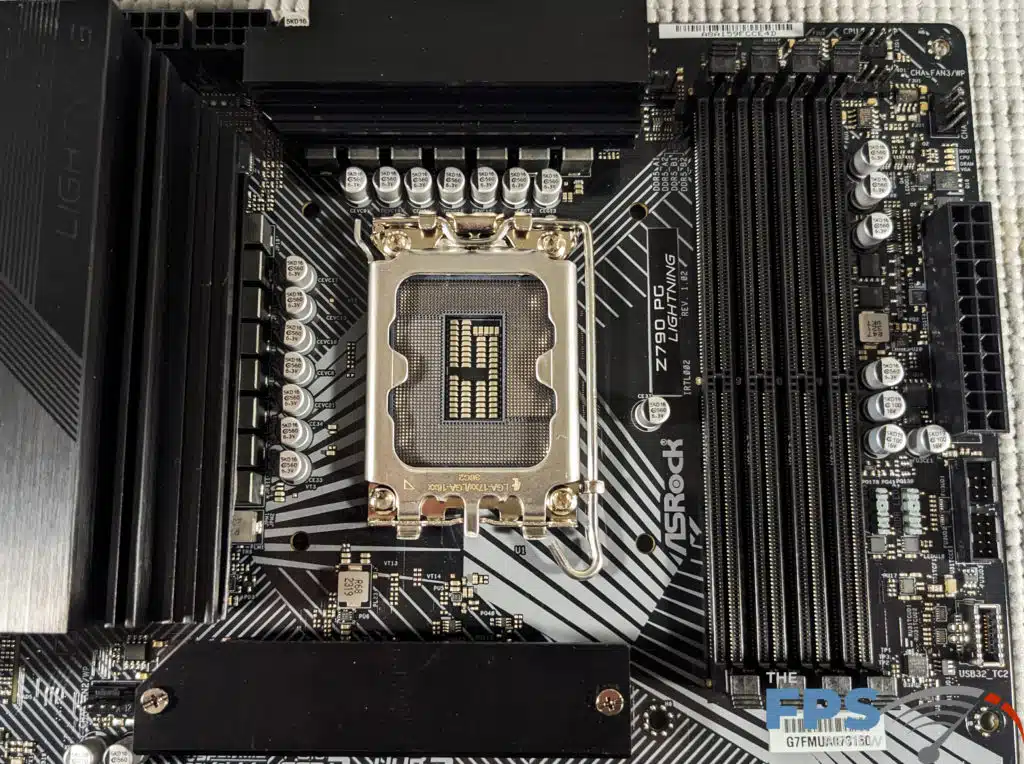
ASRock claims the motherboard has a 14+1+1 (VCore+GT) Dr. MOS phase power delivery system. More than likely, ASRock is simply using two inductors per phase though I can’t confirm that for certain. However, what I do know per ASRock’s website is that the Power Stages are only 50A each. Comparatively, the MSI MAG Z790 TOMAHAWK MAX WiFi has 16 phases but it has 90A power stages.
A high-end board these days will have power stages rated for upwards of 110A. Given that, the ASRock Z790 PG Lightning has a fairly anemic VRM implementation compared to higher-end motherboards. Again, placed into the proper context of its price, this is to be expected. The VRM implementation should be adequate with some headroom to spare for future CPUs. On the other hand, you won’t be breaking overclocking records with the ASRock Z790 PG Lightning.
A lot of people don’t understand why you need VRMs that are capable of outputting crazy amounts of power. Well, the benefit is that your VRMs don’t have to work very hard and remain at an output level where they can run more efficiently. When pushed close to their max output they get hot and their efficiency plummets. An ultra-high-end VRM might not even need its heat sinks if you aren’t asking much of it. Fortunately, while not fancy the ASRock Z790 PG Lightning has fairly substantial heat sinks for its VRMs. It’s one of the few luxuries you get with it.

When it comes to memory, the ASRock Z790 PG Lightning has four DDR5 DIMM slots supporting up to 192GB of memory at clock speeds in excess of 7200MHz through overclocking. It supports both XMP and EXPO memory performance profiles. Naturally, these lack color coding to denote proper dual-channel memory mode operation, though the slots are marked on the PCB. These use locking tabs on either side of each slot, which is more common on budget-oriented boards, though this also depends on clearances and whether or not there is room for locking tabs on both sides of the slot without running into the expansion slot area.
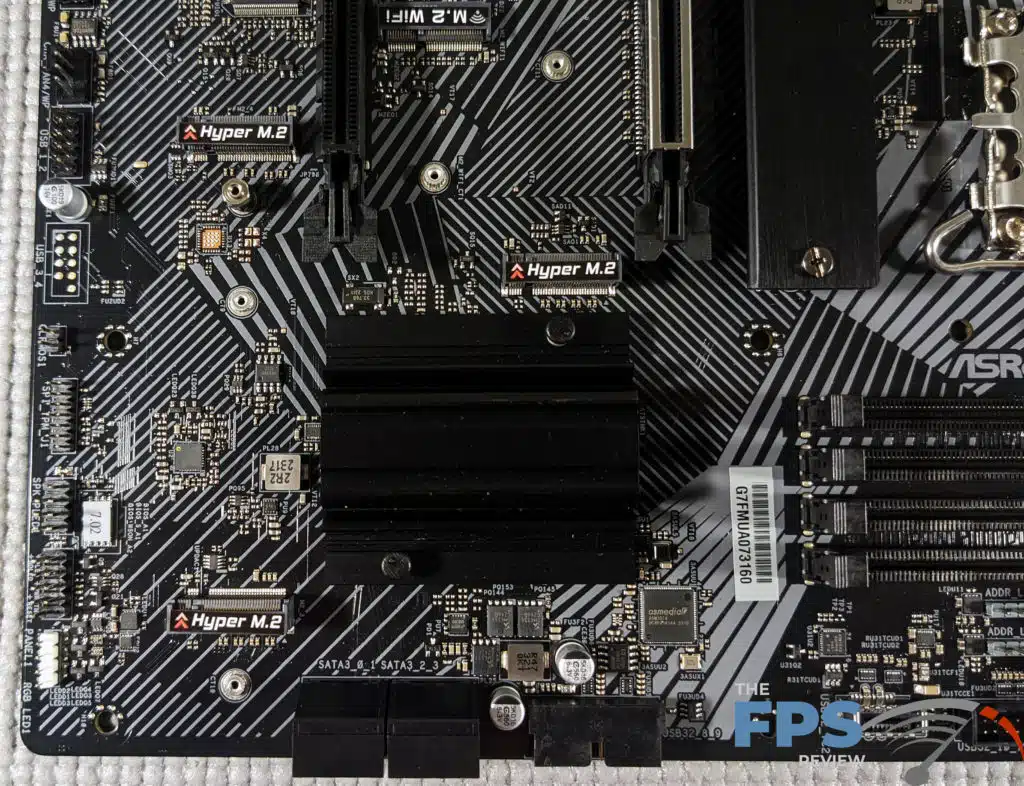

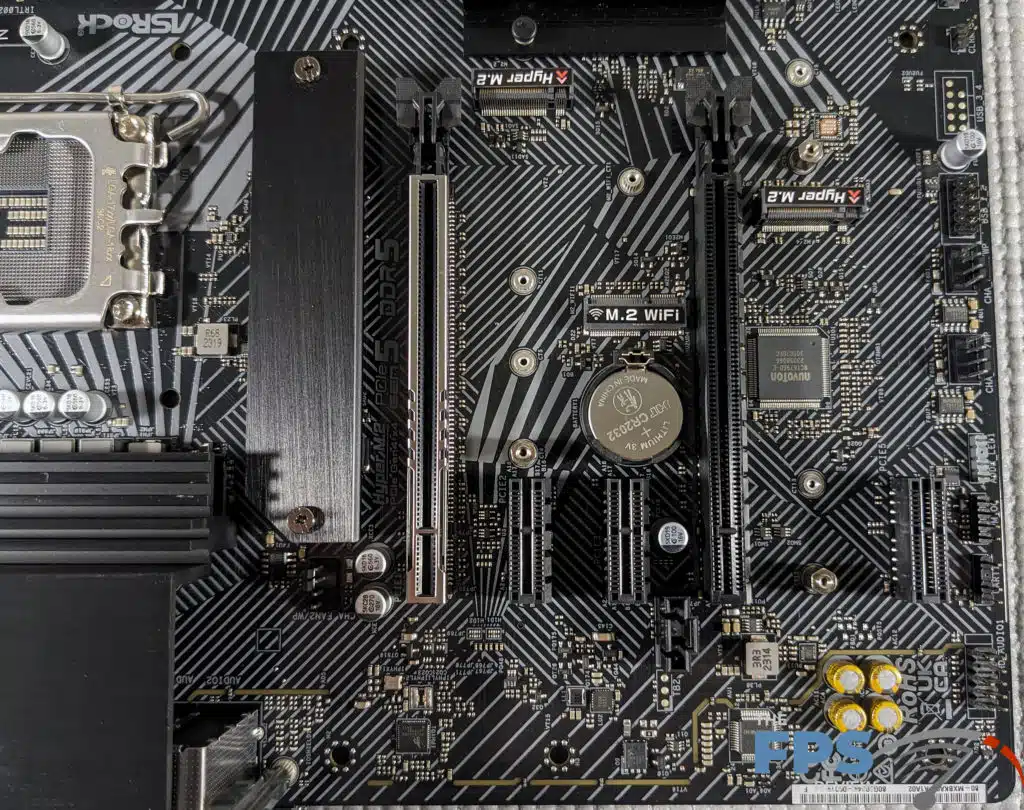
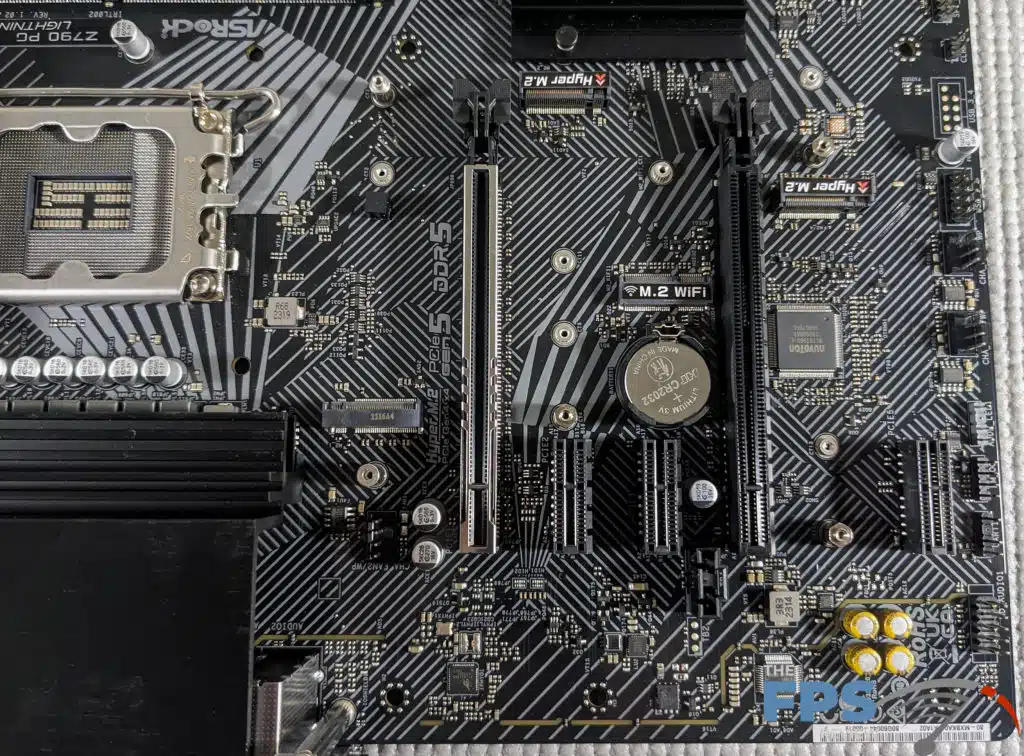
When it comes to expansion slots, the ASRock Z790 PG Lightning has a single Gen 5.0 PCIe x16 slot which is linked to the CPU’s PCIe controller. Attached to the chipset there is a single PCIe 4.0 x4 slot (x16 physical) and 3x PCIe 3.0 x1 slots. The primary PCIe Gen 5.0 x16 slot does feature steel reinforcement though that’s the only luxury item here. The chipset heat sink is one of the smallest and most anemic I’ve ever seen. The chipset is mounted using push pins with springs rather than being screwed in place. This is less than ideal as it allows the heat sink to shift and this type of retention hardware can fail as it’s under some spring tension and the clips that hold it to the board are just cheap plastic tabs.
The ASRock Z790 PG Lightning has 4x M.2 slots for Type 2280 storage devices and 1x M.2 (Type 2230) slot for WiFi devices. However, this slot is empty as the ASRock Z790 PG Lightning does not come with WiFi. Most motherboards have multiple M.2 slot covers that can act as heat sinks. The ASRock Z790 PG Lightning only has one such cover and there isn’t much to line it up on so it can be tough to actually reinstall. The M.2 slots don’t have the fancy tool-less M.2 device retention slots or anything like that.
Naturally, the ASRock Z790 PG Lightning has integrated audio. Given the price point, I knew it would come with a budget CODEC and that’s exactly what it has. It integrates a Realtek ALC897 which is a very old CODEC at this point. However, the implementation is more important than the CODEC itself. However, ASRock gives no information on how it is implemented. Presumably, it features PCB isolation as that is very common on most motherboards. Beyond that, we just know what CODEC has and that it officially supports 7.1 channel-HD audio.
The network controller is a 2.5GbE Realtek “Dragon” gaming NIC. It is a RTL8125BG controller supporting 10/100/1000/2500 Mb/s speeds. While Realtek is certainly a budget option, it’s a good one. I’ve reviewed a few motherboards utilizing this controller and all of them have worked perfectly.

One of the few luxuries you get with the ASRock Z790 PG Lightning is a built-in I/O shield. Not only that, but it’s actually nicely done and is not only stylish but functional. For WiFi versions, holes are provided for running your antenna jacks. USB ports are color-coded and it features USB 2.0, 3.2 Gen 1, and a USB 3.2 Gen 2×2 type-C port. You also get a PS/2 keyboard or mouse port if you want to go old school. There is also an HDMI port and 3x mini-stereo jacks. These are color-coded to denote what they are. Lastly, you do have an RJ-45 LAN 2.5GbE network port.
BIOS
The ASRock Z790 PG Lightning utilizes a 128Mb AMI licensed UEFI BIOS ROM. Version 10.5 was used for all of our testing though I believe one of the screenshots shows the older version.




The BIOS of the ASRock Z790 PG Lightning is visually striking. It falls somewhere between the aesthetic of ASUS’ ROG lineup and MSI’s higher-end gaming boards. The interface actually does share a lineage with ASUS’ UEFI and is broadly similar in terms of its layout and overall design. Its easy mode is even very similar despite being devised long after the lineage had diverged down different paths.
However, the ASRock version of the EZ mode has a cleaner look to it and is less overwhelming. Additionally, the ASRock Z790 PG Lightning has RGB controls within the UEFI. ASUS motherboards generally don’t.








As you can imagine, the fact that an EZ-Mode exists implies the existence of a less-than-EZ-Mode or some sort of hardcore mode. In a sense, this is accurate as the ASRock Z790 PG Lightning does feature an advanced mode. In the advanced mode, ASRock lays everything out in various categories at the top of the menu. This is par for the course and the UEFI for the ASRock Z790 PG Lightning is laid out just as it is with any other ASRock motherboard we’ve reviewed recently and it is just like every ASUS motherboard since the Z68 chipset days so long ago.




The user experience for the ASRock Z790 PG Lightning is quite good offering simple categories at the top of the menu and easy-to-understand menus. ASRock does occasionally fall into the trap of having more sub-menus than is generally needed but is in no way as big an offender on this as other manufacturers can be.
All of the features you would expect such as fan tuning, hardware monitoring, overclocking, and memory tuning can be found in the UEFI. Descriptions for major settings generally appear on the right and help make sense of a relatively complex BIOS. The BIOS responds well to both mouse control and keyboard navigation. You can simply click on a setting and see the available options or select an option from the drop-down menu.
Additional tools such as RGB control and SSD secure erase tools are present in the UEFI of the ASRock Z790 PG Lightning. While the SSD tools aren’t that unusual, RGB control is. Generally speaking, the UEFI BIOS implementation on the ASRock Z790 PG Lightning is a strong point.
Test Setup
As stated earlier, at the time of this writing we have installed the latest BIOS revision on the ASRock Z790 PG Lightning. Specifically, version 10.05 was used for all testing and screenshots. XMP was enabled and the memory was set to DDR5 6800MHz speeds.
For the OS setup note that we are on the latest 23H2 Windows 11 update with all incremental Windows updates applied at the time of writing.
As with other motherboards we have recently tested, we are providing the test results below to give an idea of what a user can expect in a pure stock installation. While the option for factory overclocking was available, we only tested the motherboard with a base configuration. With testing you will notice the lack of a Latency Mon test, a staple of our reviews, this is due to all attempts to test providing false high readings.
Subsystem Testing
SSD Performance
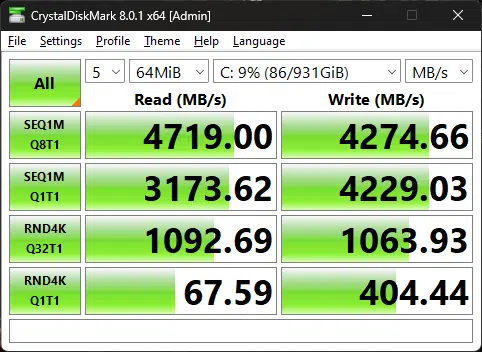
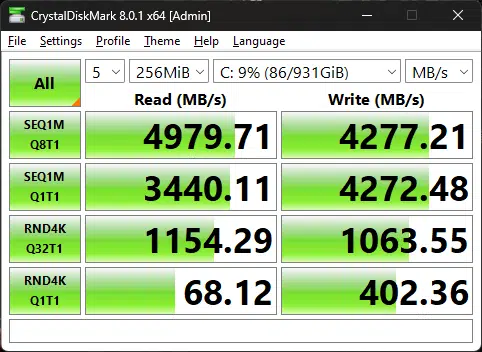
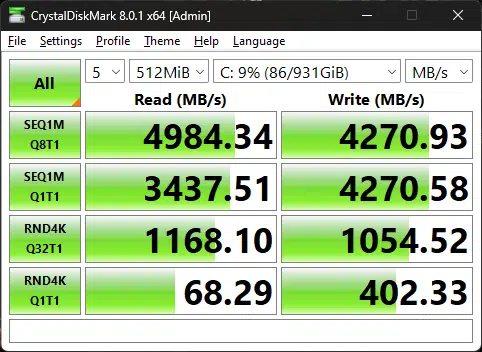
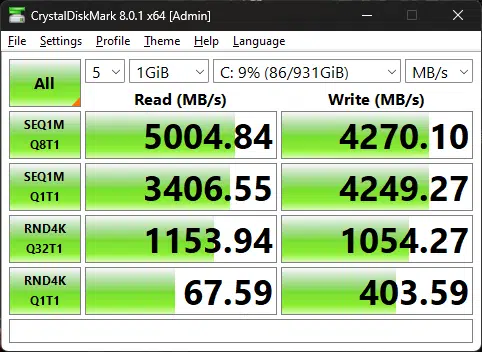
For this test, we used a Corsair MP600 1TB NVMe SSD to test the SSD performance of the ASRock Z790 PG Lightning. Performance was tested using 64k, 256k, 512k, and 1Gbit workloads. The performance we saw from the drive was pretty close to the manufacturer’s specifications and well within our expectations.
Application Benchmarks
Memory Bandwidth
To test the memory performance of our RAM on the ASRock Z790 PG Lightning. In the AIDA64 Cache & Memory benchmark, we saw a read test result of 98,164 MB/s, a write test, 90,766 MB/s, and 90,249 MB/s in the copy test.
PCMark 10
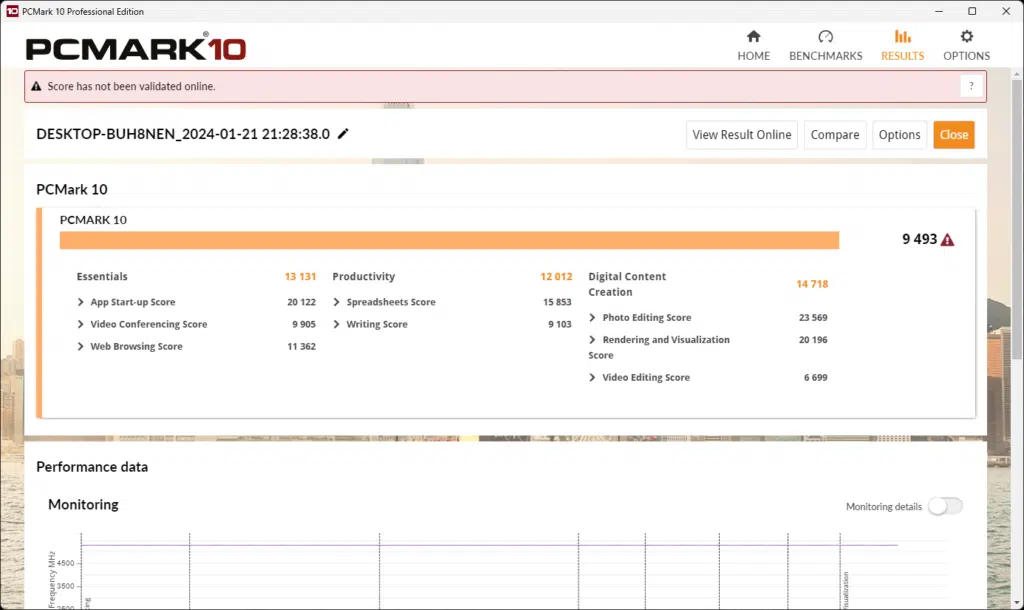
In our PCMark 10 test, the ASRock Z790 PG Lightning scored a result of 9,493. This result is right on target with our expectations and similar to the results we’ve seen on other motherboards using this same CPU.
Cinebench R23
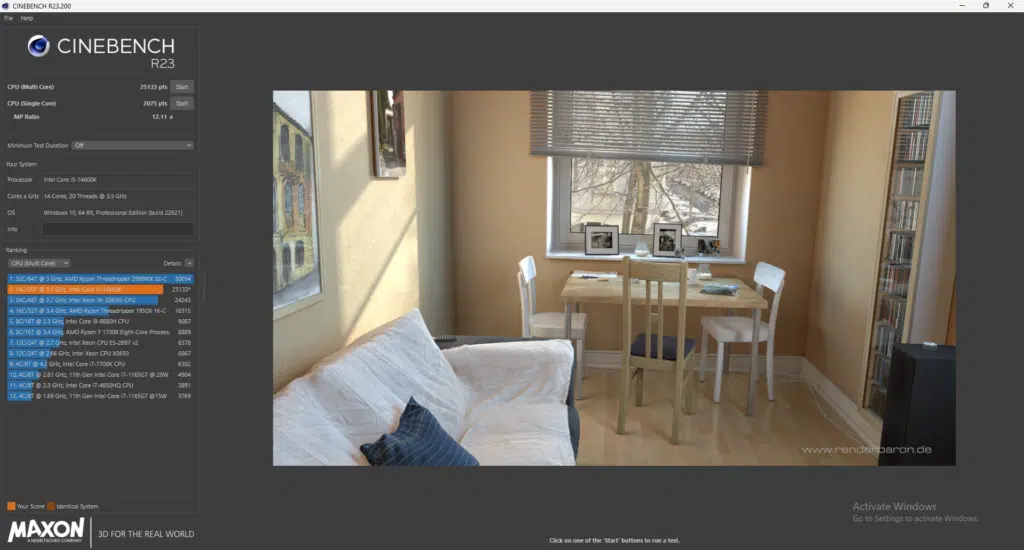
In the Cinebench R23 test, we conducted benchmarks using both the single-core and multithreaded tests. The former produced a result of 2,075 points and the latter 25,133 points.
Blender Benchmark
In the Blender Benchmark test, we achieved a score of 148,65 samples per minute in the Monster test, 99.94 SPM in Junkshop, and 75.49 SPM in the Classroom test. Again, roughly in the expected range for this configuration of hardware.
3DMark 10
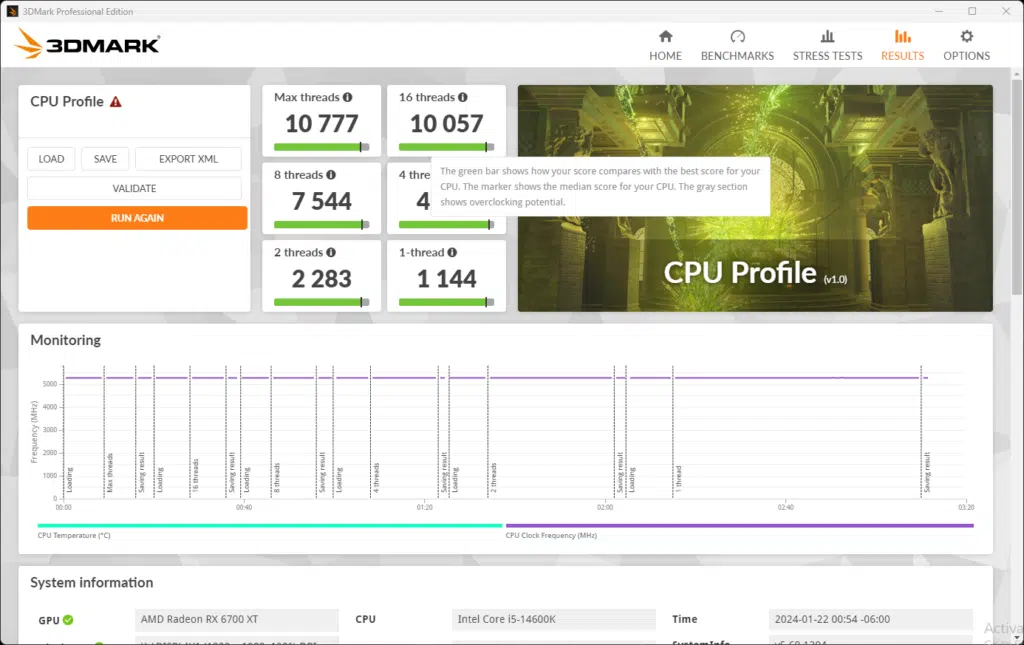
In the 3DMark 10 test, the ASRock Z790 PG Lightning achieved a result of 10,777 in the max threads test and 1,144 in the single-thread test. These results are almost identical to those we saw on the MSI MAG Z790 TOMAHAWK MAX WiFi we reviewed a while back.
V-Ray Benchmark
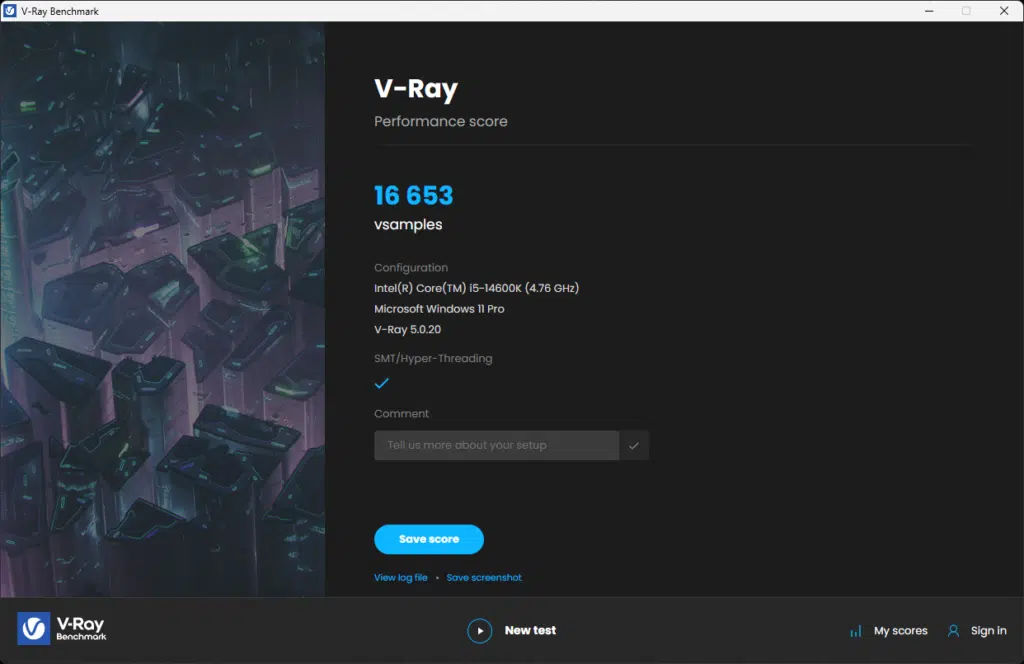
In our V-Ray benchmark, we saw a result of 16,653 V-Samples using our Core i5 14600K CPU. This is a better result than we’ve seen from motherboards that cost quite a bit more.
Conclusion
At the time of this writing, the ASRock Z790 PG Lightning is one of the budget-friendly Z790 motherboards available in North America at a price of around $200 online. (check our pricing widget below for the latest prices) There are a couple more options available for less, including one model from ASRock, but it features a different aesthetic though broadly similar features or lack thereof. Speaking of which, the feature set is basic with all features basically tied to the high-end Z790 chipset.
ASRock has removed a lot of flare to meet this lower price point with the Z790. The VRMs are not the highest-end once you get past the 14+1+1 phase of marketing and look at what the power stages are actually rated for. Phase count isn’t everything as quality beats quantity unless you can bring an absurd amount of quantity. To be clear, I don’t think the VRM is inadequate necessarily, but it’s not going to be the most efficient in some cases.
Most motherboards don’t come with a POST code LED readout any longer, which is something I get angry about every time I mention it. At this price point, I wouldn’t expect it because most of the money for this thing is in the chipset. It’s in the VRM too, despite some of the cost-cutting taking place there.
You do only get the one M.2 heat sink and it’s not the overall best we’ve ever seen. The screws are kind of captive, but there is nothing to align the screws on when installing the cover. One of the cover screws is actually used to hold the drive in place. This is fine on a technical level but it’s a pain to line up. If you have the board in a case, M.2 screws are not fun to deal with. I’d probably leave it off since that’s how the other three slots are done.
You get four SATA ports instead of the typical six, and you do not have the ability to run PCIe Gen 5.0 SSDs. You lose out on an optical jack and have fewer mini-stereo jacks, etc. Granted for the price you have to adjust your expectations accordingly, but at this price point, a B760-based motherboard may align better. ASRock has delivered a Z790 chipset at B760 prices. That sounds good on paper, but again you sacrifice a lot to get there.
Installation and Use
The installation and general setup went as smoothly as can be expected. There were no surprises and everything generally worked fine except for the audio. The audio didn’t work out of the gate and after messing with drivers for hours I was ready to chalk this up to a hardware issue. To confirm this I even went so far as to swap a sound card into the system for testing purposes. When that didn’t work I realized the issue was with the connection going to my audio receiver which I use for all the audio in my office. However, I normally use optical connections for both my main rig and the test bench. The lack of that capability meant that I was forced to use an analog cable and didn’t connect it to the proper input.
I am not a fan of this trend of motherboard manufacturers to only give you three mini-stereo jacks and no optical output. It’s not something that costs a lot and motherboard manufacturers just seem to be getting greedier and greedier jacking prices and giving you less for your money but I digress.
Despite the motherboard’s extreme budget nature and obvious cost-cutting measures, I have to admit that the motherboard worked flawlessly even going so far as to run the memory at DDR5 6800MHz without any issues whatsoever.
Final Points
This motherboard sacrifices small things you find on a lot of motherboards that help make the user experience better in order to slash prices and maintain a certain profit margin. To be fair, this is what ASRock generally excels at. The question is, has the cost-cutting to make this Z790 board viable gone a little too far?
In my opinion, going with a “lesser” chipset, like the B760, allows to you get a nicer motherboard with more options. Personally, a B760 motherboard is my preference as I think such a board going to provide a nicer overall user experience. You can pick these up for about the same money and get a lot more with them because the chipset doesn’t cost as much. Sure, there are potential use cases for Z790 over B760, but at the $200 mark, I think you are getting more for your money if those specific scenarios don’t apply to you.
The bottom line is that the ASRock Z790 PG LIGHTNING is stripped down to make the Z790 chipset viable at this price point. It’s a great motherboard in terms of stability, and performance, and worked great in our testing. The only question is, at this price point, could you find a B760-based motherboard that adds more options? That said, I can’t deny the results. It performed well and worked flawlessly. If you are dead set on the Z790 chipset and want one for B760 pricing then this is one of your best options. Just understand that you aren’t getting a fully featured board in options for that price.

